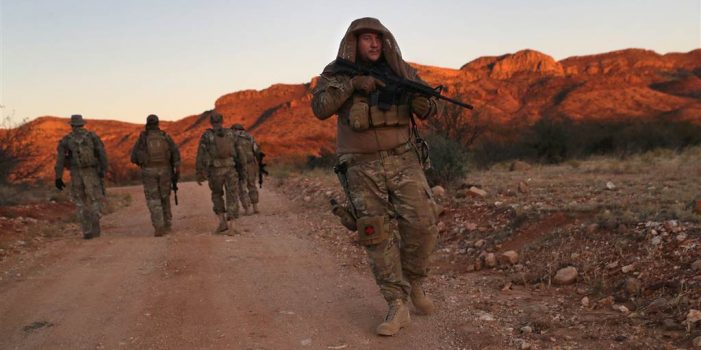Email a copy of 'Perspectives on Patrolling- Part 4, by J.M.' to a friend
9 Comments
- Ad SOURCE FOR IVERMECTIN / HCQ, ANTIBIOTICS, ALL REGULAR MEDS“Mygenericstore” is a well-established pharmacy service that deals primarily with generic medicines produced by quality-assured manufacturers from developing countries.
- Ad Ready Made Resources, Trekker Water Filtration SystemUsed throughout the World


Good article. Especially the uniformity of patrol members dress and equipment placement. First Aid Kits and Wound Dressings need to be in exactly the same place on every individual. Especially for night patrols. Withdrawal under pressure is one of the most difficult maneuvers for an Infantryman. Which means you should practice it regularly.
Excellent series
When standing guard on an observation/security post at night an anpvs-14 night vision monocular mounted atop your AR-15 is a very useful piece of equipment. You can raise your rifle up and tilt the handle out sideways and rest the butt stock on top of your shoulder which will make it easy to look through your scope all while keeping your NV optic mounted on your rifle and ready to use in a moments notice. To use just pull the weapon to your shoulder and fire. However after about an hour of scanning your surrounding area you will probably develop eye strain so having your buddy set up with the same equipment works well. If it’s really dark (like out in the desert) make sure you don’t “sweep” your buddy while looking around.
What lever are you talking about?
Also, you shouldn’t be constantly scanning with NV, anyway. At an OP, You should only be looking through it for a minute-or-two at a time, depending on the situation. If you have NV where you can adjust the gain (like the 14’s), that helps a lot with eye strain. You shouldn’t use any more gain than you need. In a lot of environments (not all, of course), all NV does for you is to allow you to simply see what’s hiding in the shadows caused by any residual light (which of course is amplified through your NV), compared to your eye’s naturally adjusted night vision, hence modern military sticking with one-eye monoculars.
Yes! Finally something that hasn’t been covered in a while. Great series.
I like especially how it blows a hole in the “I’m gonna be a sheepdog (duh duh duh)” mentality. Unless you know exactly what’s going on through observation of a given situation, you don’t necessarily want to start pulling triggers.
I never used the word LEVER in my comment so I don’t know how to reply about that. As far as my comment about “constantly scanning” I probably should have explained myself better. I realize that looking through a night optic constantly for one hour without stop would not be advisable but looking through it off and on for one hour is doable and I have done that quite a few times for various reasons. Even then it wears on one’s eyes.
Thank you for sharing this valuable information. And thank you for your service. May the Great Spirit guide and protect.
Thank you everyone for the great comments.
On this section …
“Every Team Member Carries Notebook. Every team member should carry at least one notebook for marking down observations. Use the larger 4 x 6 notebooks, since they provide a lot more space for writing. You should also stock up on pencils and pencil sharpeners, since they last forever (as opposed to pens, which always run out of ink at the work possible time). ”
I would also point out that ink tends to smear and run when wet. As well as, the “CLICK-CLICK” ball point is VERY LOUD when in the dead of night and you want to be quiet.